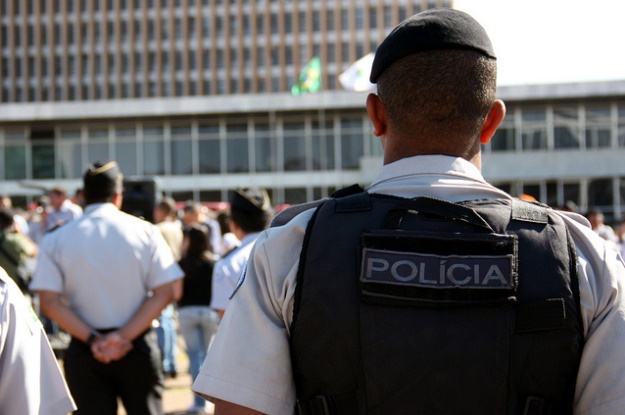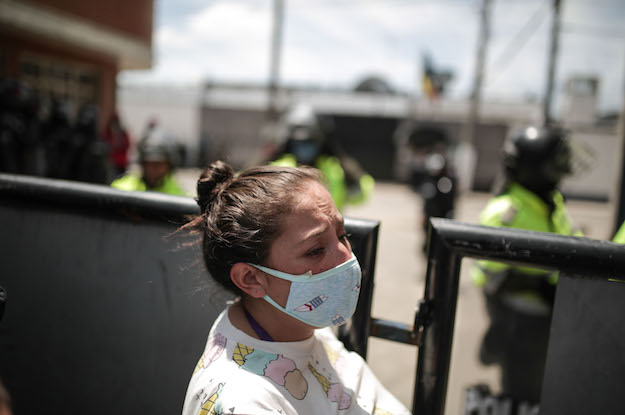Leer en español | Ler em português
In Bogotá, just 1.2 percent of street addresses account for 99 percent of homicides. In Medellín, 40 percent of all crimes occur in just 10 hours of the 168-hour week.
Perhaps more than any other part of the world, homicide in Latin America is concentrated by time and place – for policymakers hoping to reduce the region’s staggering levels of violent crime, this represents a major opportunity.
Home to just 8 percent of the world’s population, Latin America experiences 33 percent of the world’s homicides, and is disproportionately affected by other forms of victimization, including assault, robbery and property crime. Most of this occurs in just a handful of urban settings. In response, crime prevention measures that explicitly target places, people and times where criminal activity recur have generated remarkable successes in the region.
Innovations in law enforcement and social prevention are critical to preventing murder. Various policing methods, including proximity policing, community policing and problem-oriented policing (POP), have helped reduce murder rates in once notoriously violent cities like Medellín, San Pedro Sula and São Paulo by as much as 70-90 percent over the past two decades.
Although these examples offer a glimpse of what is possible, such success stories are still rare. Policing and prevention strategies that focus on “hot spots,” “hot people” and “hot behaviors” urgently need to be replicated and scaled-up.
There are a number of ways this can be done, once the reasons that crime concentrates are taken into account. As one might expect, underlying social conditions play a major role in determining where crime occurs; if the social ties within a community are too weak to influence how people behave, criminality, in particular juvenile crime, is more likely. Likewise, where there are above-average levels of disadvantage and inequality, high levels of youth unemployment, and a high turnover of residents, violent crime becomes more common.
Moreover, the way a neighborhood is spatially designed can alternately magnify or diminish the risk of crime. Crime is in large part a function of the routine activities of individuals. Would-be perpetrators regularly consider the risks and rewards for committing a specific crime, and the opportunities are not equally distributed from one place to the next. Prospective offenders are more likely to carry out acts closer to home and in areas that are familiar.
Violence also concentrates in some less expected ways. In absolute terms, just four countries – Brazil, Colombia, Mexico, and Venezuela – account for one in four homicides globally. Within Latin America, the Northern Triangle sub-region of Central America – Guatemala, Honduras and El Salvador – consistently registers some of the highest homicide rates in the world. But when looked at more closely this distribution is far from uniform.
For example, in El Salvador homicide rates are much greater in the municipalities in the western region of the country than they are in the east. When examined within municipalities, this pattern of crime concentration continues, revealing certain geographic areas with a higher predisposition to lethal violence than others. Likewise, in the Brazilian states of São Paulo, Paraná and Paraíba, inner cities and peripheral areas are especially vulnerable to murder. Most countries and states follow similar patterns.
The extent to which homicide concentrates geographically also varies between and within cities, and even within specific neighborhoods. In Mexico City, for example, four municipalities account for more than one quarter of all crimes. In Caracas, just three municipalities account for over 50 percent of all homicides. A recent study of five Latin American countries found that 50 percent of all crime occurred on just 3-8 percent of street segments.
Temporal factors – the time of the day, days in the week and period within months – are also tightly correlated with the incidence of homicidal violence. In Brazilian cities such as Ilhéus and São Paulo, lethal violence is more common when people have time off – during vacations, evenings and weekends. Crimes are often more likely to occur late Saturday night and early Sunday morning as people congregate outside of nightclubs and pubs.
Finally, the profile of people most affected by violent crime also varies from place to place. While poor and non-white young males are by far the most at risk of being killed throughout the region, within that group there are subsets with different risk levels. In Mexico City, for example, economic inequality and broken families play a strong role, while in Monterrey, unemployment, the presence of schools, and the concentration of young males are especially salient. In Ciudad Juárez, being a migrant, over 15 years old, living near vacant housing, and in areas with limited access to water are all factors strongly correlated with high homicide rates.
All this to suggest that more research into how violence concentrates in Latin American cities would provide opportunities for police and public safety resources to be targeted effectively. Hotspot policing programs already show clear evidence for effectiveness, and do not necessarily just displace crime but can in fact diminish it in absolute terms. Better understanding how countries are affected by violence – region by region, city by city, street by street – will give policymakers the tools they need to reduce it.
The implications of the research that has been done are increasingly clear. Studies from organizations such as the World Bank, the Latin American Development Bank, the Inter-American Development Bank, and the Organization of American States, show that when crime prevention initiatives combine targeted police deployment with socio-economic welfare programs, lethal violence declines. Colombia’s experimentation with Plan Cuadrantes is a powerful example. Similar experiments in Belo Horizonte, Recife, Rio de Janeiro, Santiago de Chile, and São Paulo offer further support.
Another key to reducing homicide is investing in restoring police relations in the most vulnerable communities. Neighborhoods that experience the highest homicide rates are typically communities where there is a poor level of trust in the police. Problem-oriented policing provides a practical approach to tackling the mechanisms that cause crime, and can include building the foundations that are required to improve police-community relations. The adoption of POP principles has been effective in tackling difficult gang-related homicide issues as well as domestic homicide.
Finally, policymakers should recognize the opportunities that come from early intervention. Research from across Latin America convincingly shows that age and educational attainment are key factors shaping violent crime exposure, and that targeted support for permanent income can play an important deterrent role in criminal involvement. Interventions that focus on supporting positive early childhood development, parenting skills, youth employment (including high-risk adolescents and young offenders), mentorship and life-skills training, and engagement in social programs (particularly for adolescents) are cost-effective and have multiple positive impacts.
This article series supports the Instinto de Vida (Instinct for Life) campaign, an effort by more than 20 civil society groups and international organizations to reduce homicide in seven Latin American countries by 50 percent over 10 years. Beginning in April 2017, the campaign will promote annual homicide reductions of 7.5 percent in Brazil, Colombia, El Salvador, Guatemala, Honduras, Mexico and Venezuela – a reduction that would prevent the loss of 364,000 lives.
—
Robert Muggah is the co-founder and research director of the Igarapé Institute and SecDev Foundation, where Katherine Aguirre is a researcher. Spencer Chainey is the principal research associate at the Jill Dando Institute of Security and Crime Science, University College of London.








